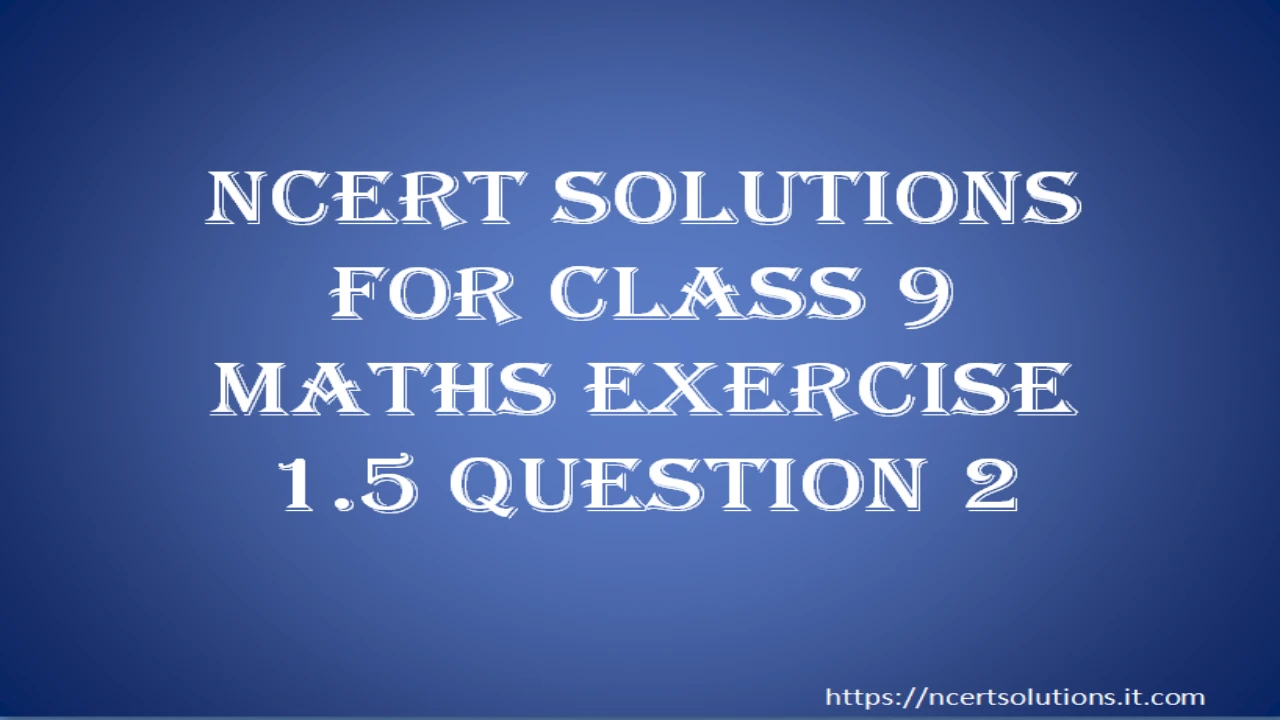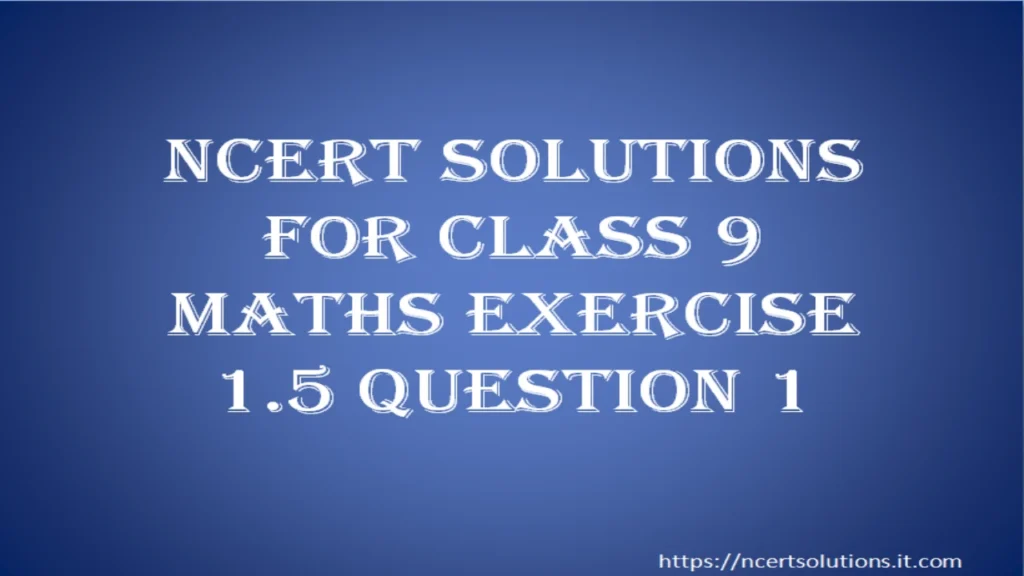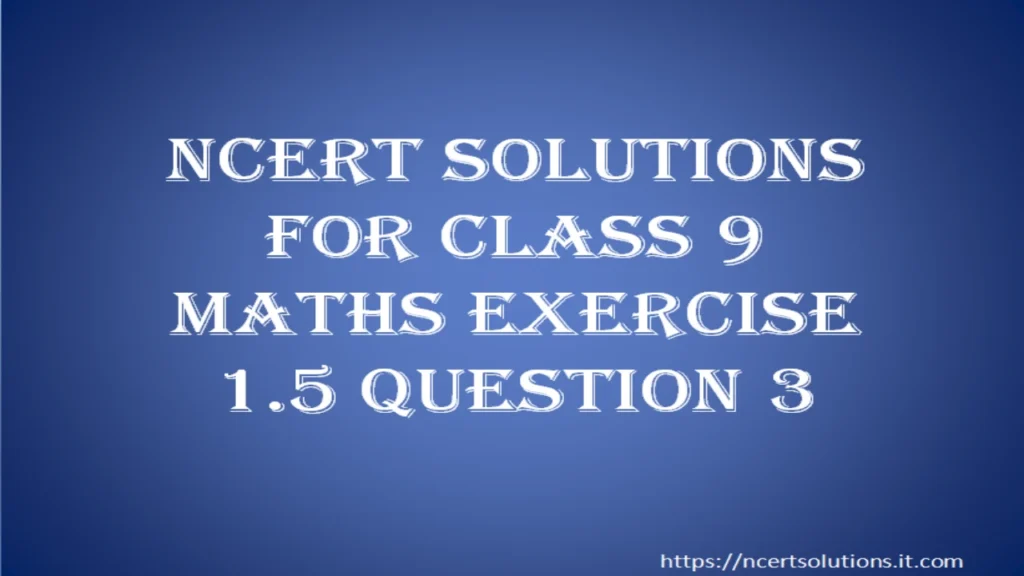NCERT Solutions for Class 9 Maths Exercise 1.5 Question 2


Understanding the Question 🧐
In this question, we are asked to simplify several expressions that involve square roots. This is a great opportunity to practice using fundamental algebraic identities. Recognizing which identity to apply is the key to solving these problems efficiently. Let’s break down each expression step-by-step.
Simplify each of the following expressions:
(i) &&(3 + \sqrt{3})(2 + \sqrt{2})&&
(ii) &&(3 + \sqrt{3})(3 – \sqrt{3})&&
(iii) &&(\sqrt{5} + \sqrt{2})^2&&
(iv) &&(\sqrt{5} – \sqrt{2})(\sqrt{5} + \sqrt{2})&&
Part (i): Simplify &&(3 + \sqrt{3})(2 + \sqrt{2})&& 📝
Step 1: Apply the distributive property (FOIL method).
This expression doesn’t fit a standard simple identity, so we multiply each term in the first bracket by each term in the second one.
&&\Rightarrow (3)(2) + (3)(\sqrt{2}) + (\sqrt{3})(2) + (\sqrt{3})(\sqrt{2})&&
Step 2: Calculate each product.
- &&3 \times 2 = 6&&
- &&3 \times \sqrt{2} = 3\sqrt{2}&&
- &&\sqrt{3} \times 2 = 2\sqrt{3}&&
- &&\sqrt{3} \times \sqrt{2} = \sqrt{3 \times 2} = \sqrt{6}&&
Step 3: Combine the terms.
Since none of the terms with square roots are like terms (&&\sqrt{2}, \sqrt{3}, \sqrt{6}&& are all different), we cannot simplify further.
Final Answer: &&6 + 3\sqrt{2} + 2\sqrt{3} + \sqrt{6}&&
Part (ii): Simplify &&(3 + \sqrt{3})(3 – \sqrt{3})&& 📝
Step 1: Identify the correct algebraic identity.
This expression is in the form of &&(a + b)(a – b)&&, which simplifies to &&a^2 – b^2&&.
- Here, &&a = 3&&
- And &&b = \sqrt{3}&&
Step 2: Apply the identity.
&&\Rightarrow (3)^2 – (\sqrt{3})^2&&
Step 3: Simplify the squares.
- &&3^2 = 9&&
- &&(\sqrt{3})^2 = 3&&
&&\Rightarrow 9 – 3 = 6&&
Final Answer: &&6&&
Part (iii): Simplify &&(\sqrt{5} + \sqrt{2})^2&& 📝
Step 1: Identify the correct algebraic identity.
This expression is in the form of &&(a + b)^2&&, which expands to &&a^2 + 2ab + b^2&&.
- Here, &&a = \sqrt{5}&&
- And &&b = \sqrt{2}&&
Step 2: Apply the identity.
&&\Rightarrow (\sqrt{5})^2 + 2(\sqrt{5})(\sqrt{2}) + (\sqrt{2})^2&&
Step 3: Simplify each term.
- &&(\sqrt{5})^2 = 5&&
- &&2(\sqrt{5})(\sqrt{2}) = 2\sqrt{5 \times 2} = 2\sqrt{10}&&
- &&(\sqrt{2})^2 = 2&&
&&\Rightarrow 5 + 2\sqrt{10} + 2&&
Combine the rational parts: &&5 + 2 = 7&&.
Final Answer: &&7 + 2\sqrt{10}&&
Part (iv): Simplify &&(\sqrt{5} – \sqrt{2})(\sqrt{5} + \sqrt{2})&& 📝
Step 1: Identify the correct algebraic identity.
Just like in part (ii), this expression is in the form of &&(a – b)(a + b)&&, which equals &&a^2 – b^2&&.
- Here, &&a = \sqrt{5}&&
- And &&b = \sqrt{2}&&
Step 2: Apply the identity.
&&\Rightarrow (\sqrt{5})^2 – (\sqrt{2})^2&&
Step 3: Simplify the squares.
- &&(\sqrt{5})^2 = 5&&
- &&(\sqrt{2})^2 = 2&&
&&\Rightarrow 5 – 2 = 3&&
Final Answer: &&3&&
Conclusion and Key Points ✅
By applying the correct algebraic identities, we were able to simplify each expression:
- &&(3 + \sqrt{3})(2 + \sqrt{2}) = 6 + 3\sqrt{2} + 2\sqrt{3} + \sqrt{6}&&
- &&(3 + \sqrt{3})(3 – \sqrt{3}) = 6&&
- &&(\sqrt{5} + \sqrt{2})^2 = 7 + 2\sqrt{10}&&
- &&(\sqrt{5} – \sqrt{2})(\sqrt{5} + \sqrt{2}) = 3&&
- &&(a + b)(a – b) = a^2 – b^2&&
- &&(a + b)^2 = a^2 + 2ab + b^2&&
- &&(a – b)^2 = a^2 – 2ab + b^2&&
- &&(\sqrt{x})^2 = x&&
- &&\sqrt{x} \times \sqrt{y} = \sqrt{xy}&&
FAQ ❓
Q: Which algebraic identity is used to simplify &&(3 + \sqrt{3})(3 – \sqrt{3})&&?
A: The identity used is &&(a + b)(a – b) = a^2 – b^2&&. For this expression, &&a=3&& and &&b=\sqrt{3}&&. So, we get &&3^2 – (\sqrt{3})^2 = 9 – 3 = 6&&.
Q: What is the simplified form of &&(\sqrt{5} + \sqrt{2})^2&&?
A: This is simplified using the identity &&(a + b)^2 = a^2 + 2ab + b^2&&. With &&a=\sqrt{5}&& and &&b=\sqrt{2}&&, the expansion is &&(\sqrt{5})^2 + 2(\sqrt{5})(\sqrt{2}) + (\sqrt{2})^2&&, which simplifies to &&5 + 2\sqrt{10} + 2 = 7 + 2\sqrt{10}&&.
Q: How does &&(\sqrt{5} – \sqrt{2})(\sqrt{5} + \sqrt{2})&& simplify to a rational number?
A: This expression simplifies to a rational number by using the “difference of squares” identity &&(a – b)(a + b) = a^2 – b^2&&. Here, &&a=\sqrt{5}&& and &&b=\sqrt{2}&&. The result is &&(\sqrt{5})^2 – (\sqrt{2})^2 = 5 – 2 = 3&&, which is a rational number.
Further Reading 📖
For a deeper understanding of algebraic identities and operations on real numbers, refer to the official NCERT textbook for Class 9 Maths. More resources are available on the NCERT website at https://ncert.nic.in/.


